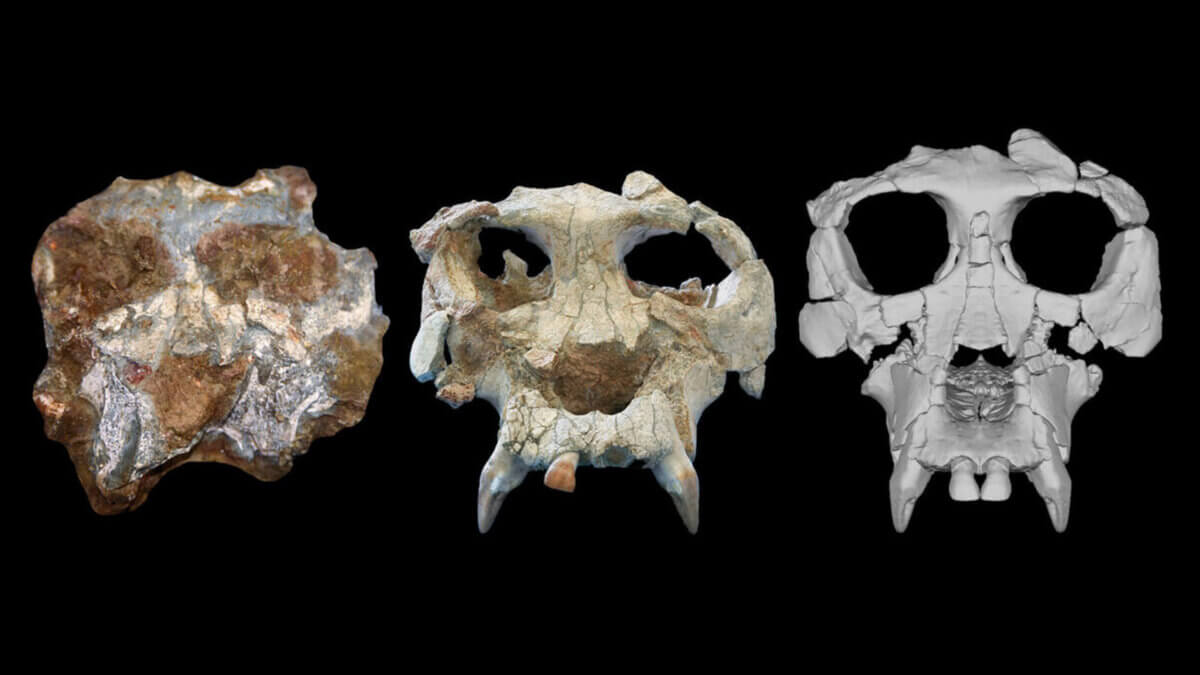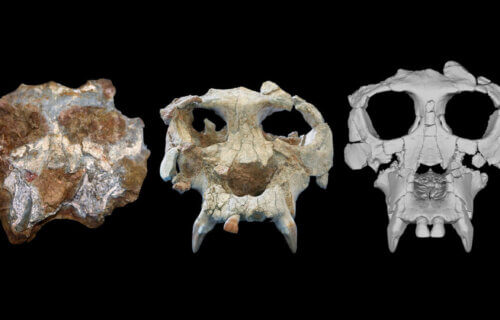NEW YORK — It only took millions of years, but an extinct ape has finally been able to get a “facelift.” Researchers from the American Museum of Natural History, Brooklyn College, and the Catalan Institute of Paleontology Miquel Crusafont have successfully reconstructed the damaged but well-preserved skull of an ancient great ape species known as Pierolapithecus catalaunicus, which lived approximately 12 million years ago.
Their study sheds light on the evolutionary history of great apes and humans.
Pierolapithecus catalaunicus, initially identified in northeastern Spain in 2004, belonged to a diverse group of now-extinct ape species that thrived in Europe between seven to 15 million years ago. What makes this species particularly valuable to scientists is that it is known from both a cranium and a partial skeleton from the same individual — a rare occurrence in the fossil record.
“Features of the skull and teeth are extremely important in resolving the evolutionary relationships of fossil species, and when we find this material in association with bones of the rest of the skeleton, it gives us the opportunity to not only accurately place the species on the hominid family tree, but also to learn more about the biology of the animal in terms of, for example, how it was moving around its environment,” says study lead author Kelsey Pugh, a research associate in the Museum’s Division of Anthropology and a lecturer at Brooklyn College, in a media release.

Previous research on Pierolapithecus suggested that it had an upright body structure before evolving adaptations that allowed hominids (great apes and humans) to move among and hang from tree branches. Nevertheless, debates persisted regarding the species’ place in the evolutionary timeline, partly due to damage to the cranium.
“One of the persistent issues in studies of ape and human evolution is that the fossil record is fragmentary, and many specimens are incompletely preserved and distorted,” says study co-author Ashley Hammond, associate curator and chair of the Museum’s Division of Anthropology. “This makes it difficult to reach a consensus on the evolutionary relationships of key fossil apes that are essential to understanding ape and human evolution.”
To address these issues, researchers employed advanced technology, including CT scans, to virtually reconstruct the Pierolapithecus cranium. They then compared it to other primate species and modeled the evolution of crucial features of ape facial structure.
Their findings indicated that Pierolapithecus shared similarities in facial shape and size with both extinct and contemporary great apes, while also possessing distinct facial features not observed in other Middle Miocene apes. This supports the notion that this species may represent one of the earliest members of the great ape and human family.
“An interesting output of the evolutionary modeling in the study is that that the cranium of Pierolapithecus is closer in shape and size to the ancestor from which living great apes and humans evolved,” notes study co-author Sergio Almécija, a senior research scientist in the Museum’s Division of Anthropology. “On the other hand, gibbons and siamangs (the ‘lesser apes’) seem to be secondarily derived in relation to size reduction.”
The study is published in the journal Proceedings of the National Academy of Sciences.
You might also be interested in:
- Have great posture? Thank this 21-million-year-old ape for it!
- Humans evolved into water-saving primates — thanks to evolution of the nose?
- Artificial intelligence can tell how many years younger someone looks after a facelift

